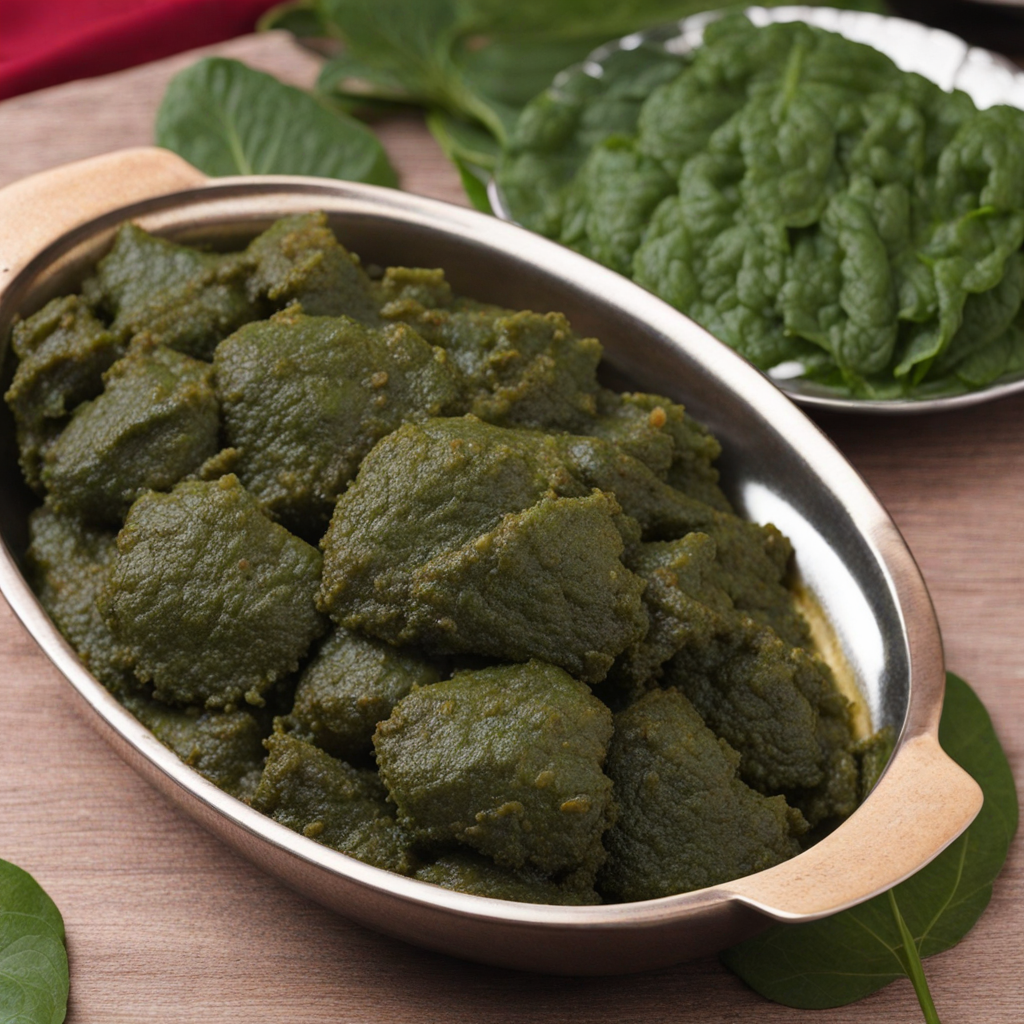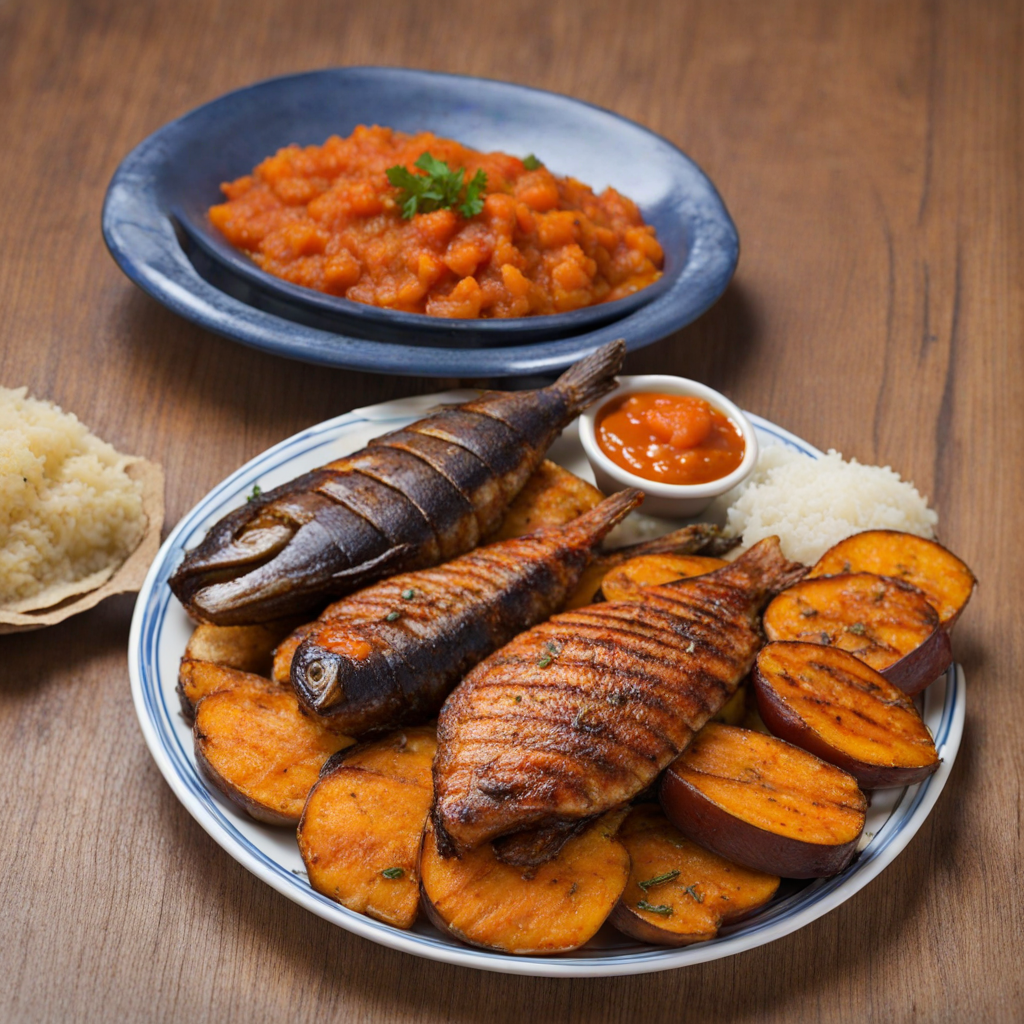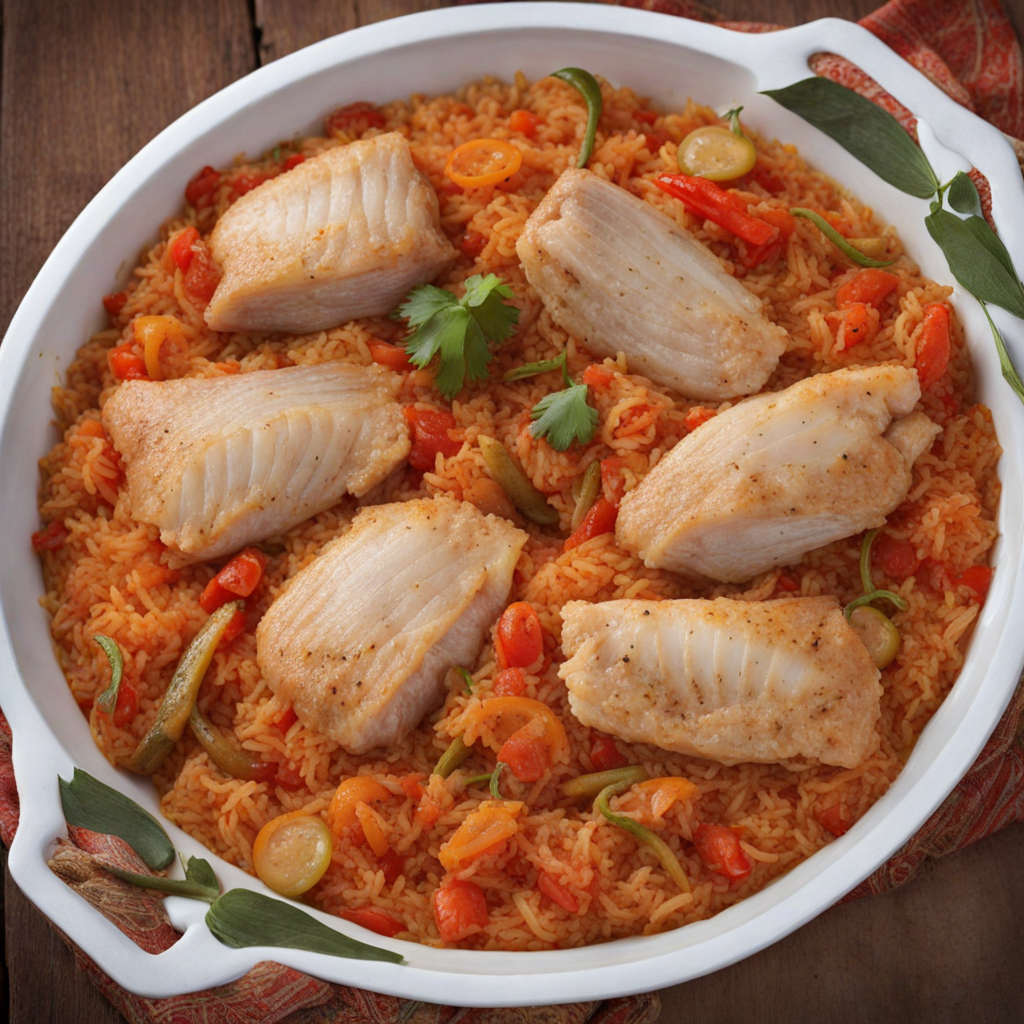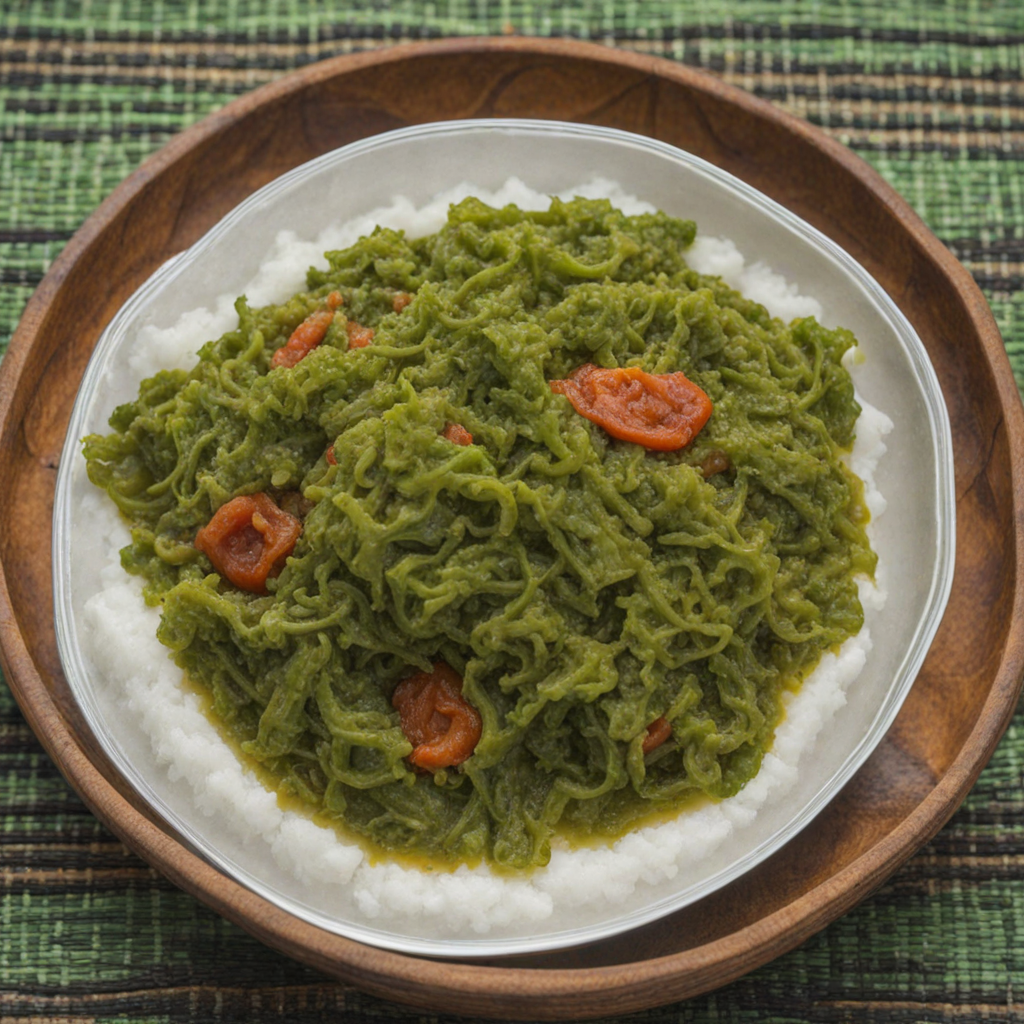Chikuanga
Chikuanga is a traditional Angolan dish that embodies the rich culinary heritage of the country. Made primarily from cassava flour, this dish is a staple in many Angolan households. The cassava is harvested, processed, and then shaped into a thick, dough-like consistency. It is typically wrapped in banana leaves and steamed, which imparts a subtle, earthy flavor to the dish. The result is a dense, chewy texture that offers a unique mouthfeel, making it a satisfying accompaniment to various stews and sauces. In terms of flavor, Chikuanga is relatively neutral, allowing it to pair beautifully with a wide array of savory dishes. It is often served alongside rich, flavorful stews made from fish, meat, or vegetables, which are common in Angolan cuisine. The dish acts as a perfect canvas, soaking up the spices and flavors from the accompanying sauces, providing a delightful contrast between the hearty, starchy Chikuanga and the vibrant, aromatic dishes it complements. Beyond its taste, Chikuanga is also a social dish, often enjoyed in communal settings, reflecting the warmth and hospitality of Angolan culture. Whether served during festive occasions or as a daily meal, it brings people together, fostering a sense of community and sharing. Experiencing Chikuanga is not just about the food itself, but also about embracing the cultural significance it holds for many Angolans, making it a must-try for those seeking to explore new flavors.
How It Became This Dish
Chikuanga: A Culinary Journey Through Angola's Heart Chikuanga, a traditional Angolan dish, is more than just a staple food; it is a symbol of resilience, community, and cultural identity. This unique dish, made primarily from cassava (manioc), has deep roots in Angola's history, reflecting the intersection of indigenous practices, colonial influences, and modern adaptations. #### Origins: The Foundation of Chikuanga Cassava, the primary ingredient in chikuanga, is native to South America but was brought to Africa by Portuguese colonizers in the 16th century. It quickly adapted to the African landscape, thriving in Angola's tropical climate. Indigenous tribes, such as the Ovimbundu and the Kimbundu, embraced cassava, incorporating it into their diets. The tuber became a vital source of carbohydrates and sustenance, particularly in regions where other crops struggled to grow. The preparation of chikuanga involves peeling, grating, and fermenting cassava before cooking it into a dough-like consistency. Traditionally, this dough is wrapped in banana leaves and steamed, giving it a distinct flavor and texture. The process is labor-intensive and requires communal effort, which speaks to the dish's cultural significance in Angolan society. #### Cultural Significance: More than Just Food Chikuanga is not merely a meal; it is an integral part of Angolan culture and social life. It is often served at significant events, such as weddings, festivals, and communal gatherings, serving as a symbol of unity and hospitality. The dish is typically accompanied by a variety of stews, meats, and vegetables, which enhance its flavor and nutritional value. In Angolan homes, the preparation of chikuanga often becomes a communal activity, with family members and friends gathering to share in the labor and joy of cooking. This practice fosters social bonds and reinforces cultural ties, as recipes and techniques are passed down through generations. Each family may have its unique twist on the dish, reflecting local ingredients and personal preferences, thereby contributing to a rich tapestry of culinary diversity. #### Historical Context: Chikuanga Through the Ages The history of chikuanga is inextricably linked to Angola's colonial past and subsequent struggle for independence. The Portuguese colonization in the late 15th century brought significant changes to Angolan society, including the introduction of new agricultural practices and crops. However, colonial rule also disrupted traditional food systems and imposed foreign culinary practices. Despite these challenges, Angolans maintained their culinary heritage, and chikuanga became a symbol of resistance and cultural pride. During the struggle for independence from Portugal in the mid-20th century, traditional foods like chikuanga served as a reminder of Angola's identity and resilience. It was a source of sustenance for freedom fighters and communities affected by war, embodying the spirit of endurance amidst adversity. As Angola gained independence in 1975, chikuanga continued to evolve. The post-colonial period saw a resurgence of interest in traditional foods, as Angolans sought to reclaim and celebrate their culinary heritage. Chikuanga became a symbol of national pride, representing the blending of indigenous and colonial influences that define Angolan cuisine. #### Modern Development: Chikuanga Today In the 21st century, chikuanga has transcended its traditional roots while still holding onto its cultural significance. The dish is now enjoyed not only in homes but also in restaurants and urban settings, where chefs experiment with flavors and presentation. Variations of chikuanga incorporate modern ingredients, such as cheese or spices, appealing to younger generations and international palates. Moreover, the globalization of food culture has allowed chikuanga to gain recognition beyond Angola. It has found its way onto international menus, showcasing the flavors of Angolan cuisine to a broader audience. This exposure promotes cultural exchange and understanding, allowing people from different backgrounds to appreciate the richness of Angolan culinary traditions. However, this modernization also presents challenges. As urbanization and globalization continue to impact traditional food practices, there is a risk of losing the communal aspects associated with chikuanga preparation. Many Angolans are now living in cities, and the traditional methods of preparing chikuanga in a communal setting may dwindle. Nevertheless, efforts to preserve culinary heritage are gaining momentum, with initiatives aimed at promoting traditional cooking techniques and encouraging local sourcing of ingredients. #### Conclusion: The Legacy of Chikuanga Chikuanga is more than just a food item; it is a testament to Angola's history, culture, and resilience. From its origins rooted in indigenous practices to its evolution amidst colonialism and modernity, chikuanga encapsulates the spirit of a nation. It serves as a reminder of the importance of community, tradition, and identity in a rapidly changing world. As Angola continues to grow and adapt, chikuanga remains a beloved dish that bridges the past and present. Its preparation and consumption foster connections among people, celebrating the shared heritage of Angolans while inviting new interpretations and experiences. In every bite of chikuanga, there lies a story—a story of survival, unity, and the enduring legacy of a rich culinary tradition that will continue to thrive for generations to come.
You may like
Discover local flavors from Angola






